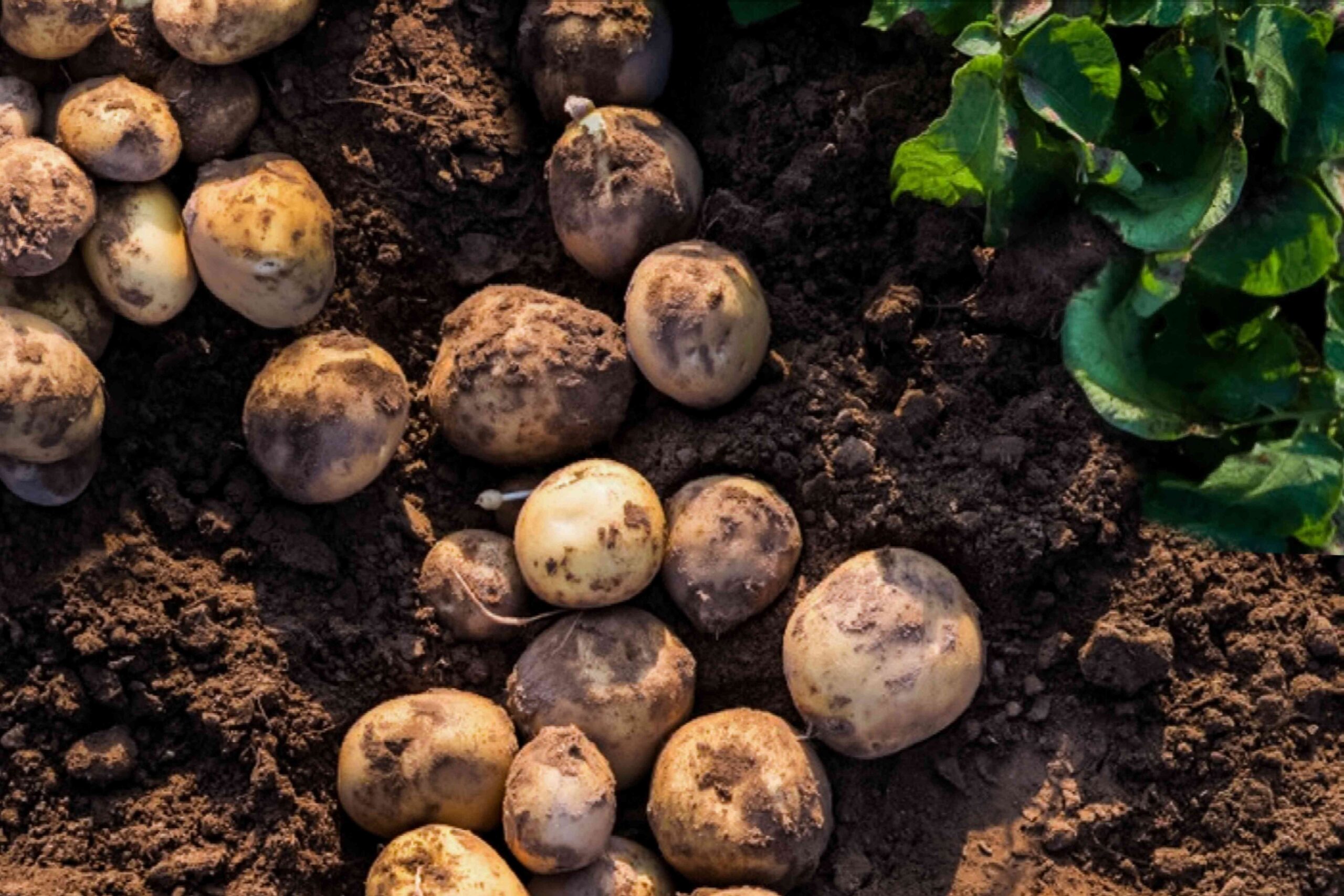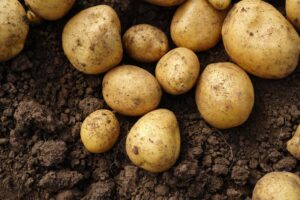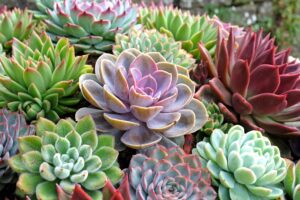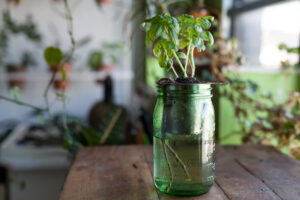Companion Plants for Potatoes: Boosting Your Harvest with Strategic Pairings
Potatoes are a versatile garden staple that can yield impressive harvests with proper care and strategic planting. One of the most effective methods to maximize your potato production while minimizing pest problems is companion planting. By carefully selecting which plants grow alongside your potatoes, you can create a healthier garden ecosystem that benefits all your crops without relying on chemical interventions. This comprehensive guide explores the best companion plants for potatoes, what to avoid, and specific strategies for growing onions and potatoes together.
Why Companion Planting Works for Potatoes
Companion planting is more than garden folklore—it’s supported by growing scientific evidence and generations of gardener experience. When strategically implemented, companion planting offers several key benefits for potato crops:
Pest Management
Many companion plants naturally repel potato-specific pests or attract beneficial insects that prey on common potato pests. This creates a natural pest control system that reduces or eliminates the need for chemical interventions.
Nutrient Enhancement
Certain plants can improve soil fertility by fixing nitrogen or mining nutrients from deeper soil layers, making these resources available to nearby potato plants.
Space Optimization
Since potatoes primarily grow underground while developing extensive root systems, pairing them with plants that have different growth habits allows you to maximize garden space.
Disease Prevention
Some companion plants produce compounds that boost potato plants’ natural disease resistance and help protect them from common blights and fungal infections.
Flavor Enhancement
Interestingly, certain companion plants may even improve the flavor of potato tubers, although this benefit is more anecdotal than scientifically proven.
Best Companion Plants for Potatoes
Aromatic Herbs
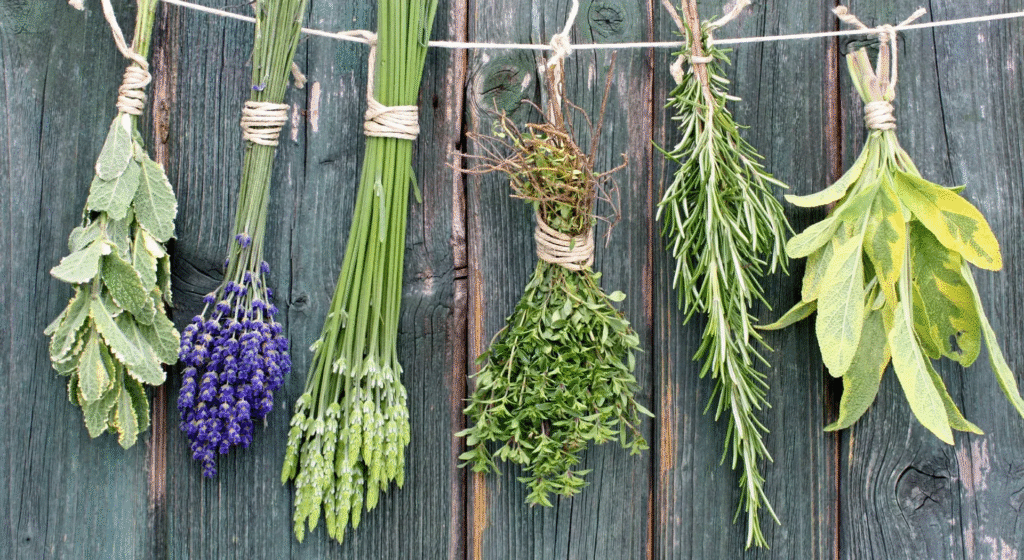
Basil: This popular culinary herb repels potato beetles and other damaging insects with its strong aroma. Plant basil around the edges of your potato patch to create a protective barrier.
Cilantro: When allowed to flower, cilantro becomes an excellent attractor for beneficial insects like hoverflies, parasitic wasps, and ladybugs that prey on potato pests including aphids and Colorado potato beetle larvae.
Thyme: Its aromatic properties deter potato pests while attracting pollinators and beneficial predators. Thyme prefers drier soil conditions than potatoes, so place it on the southern, sunnier side of potato mounds.
Catnip: This member of the mint family repels various garden pests while attracting beneficial pollinators.
Alliums (Onion Family)
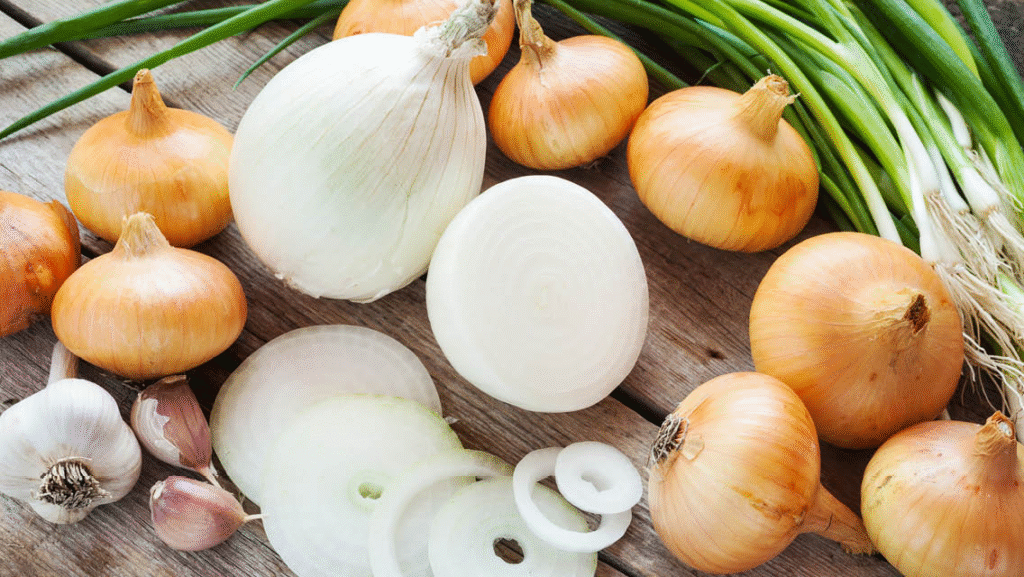
Onions: Onions and potatoes make excellent companions, despite some conflicting information. Their complementary growth habits allow them to thrive together—potatoes develop deep root systems, while onions remain shallow-rooted. The strong aroma of onions helps repel Colorado potato beetles and other pests that commonly damage potato crops. Some gardeners report that onions can also help deter voles and other rodents that might otherwise feed on underground tubers.
Garlic: Similar to onions, garlic produces sulfurous compounds that repel many potato pests. Some studies suggest that intercropping garlic with potatoes may even help reduce the incidence of late blight, one of the most devastating potato diseases.
Leeks: These alliums have shallow root systems that don’t compete with potatoes for underground space or nutrients. Their pungent aroma provides similar pest-repelling benefits as onions and garlic.
Scallions/Green Onions: These quick-growing alliums can be easily incorporated between potato rows. Their compact size makes them ideal for filling small spaces in the potato patch while providing pest-deterring benefits.
Legumes
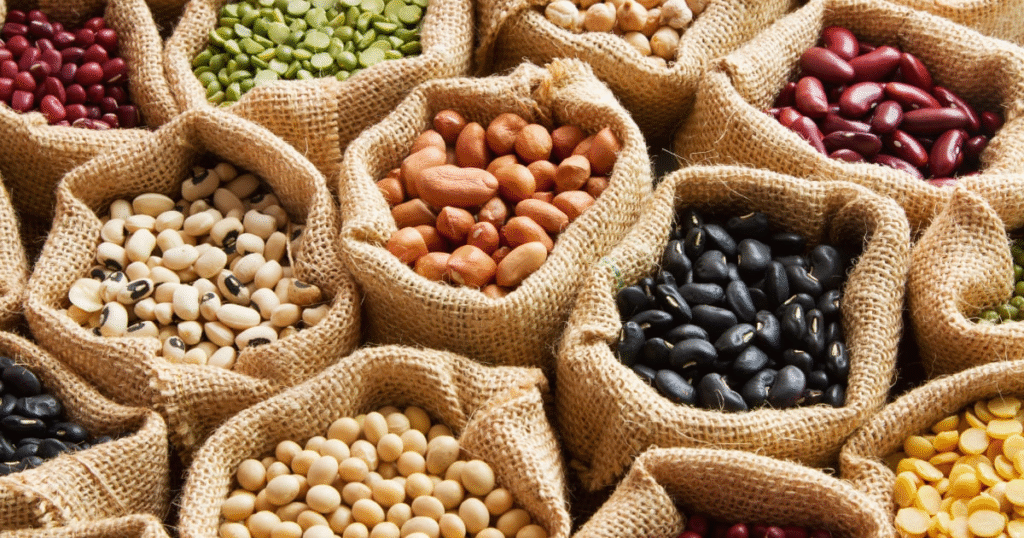
Beans: Bean plants fix atmospheric nitrogen into the soil, benefiting nitrogen-hungry potato plants. In return, potatoes help deter Mexican bean beetles that often plague bean crops. This creates a mutually beneficial relationship.
Peas: Like beans, peas are nitrogen fixers that can improve soil fertility for potatoes. Research has shown that intercropping potatoes with peas can increase overall yields per square foot of garden space.
Brassicas (Cabbage Family)
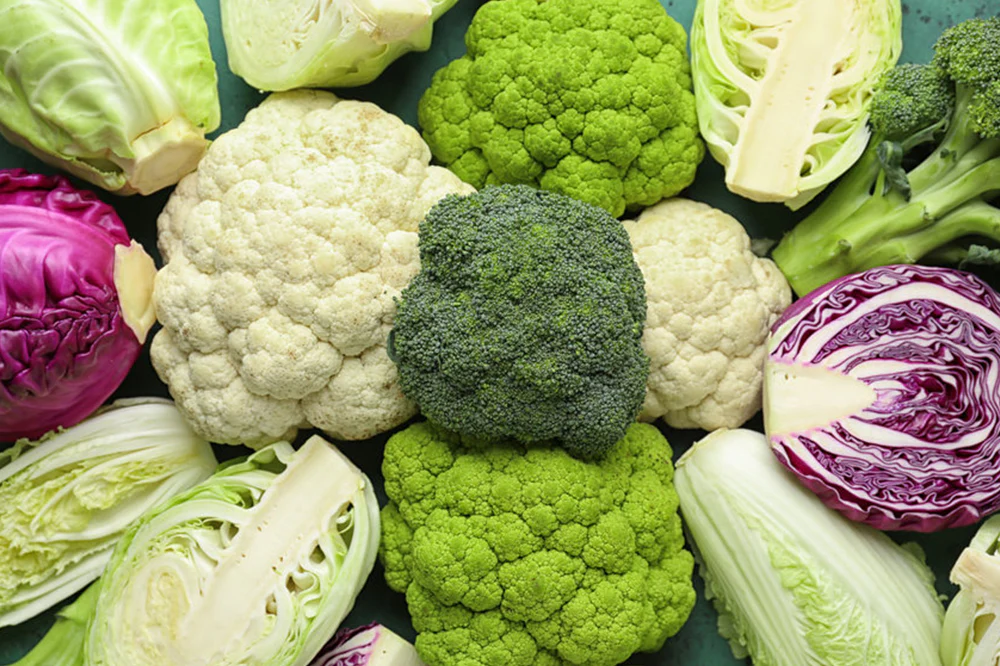
Cabbage: Members of the cabbage family have shallow root systems that don’t compete with potatoes’ deeper roots. This compatibility allows both plants to thrive without fighting for the same soil resources.
Broccoli: Similar to cabbage, broccoli can be planted near potatoes because its roots occupy different soil zones, preventing competition.
Kale: This nutritional powerhouse has a shallow root system compatible with potatoes. Some gardeners report that potatoes may help deter some common kale pests.
Flowering Plants
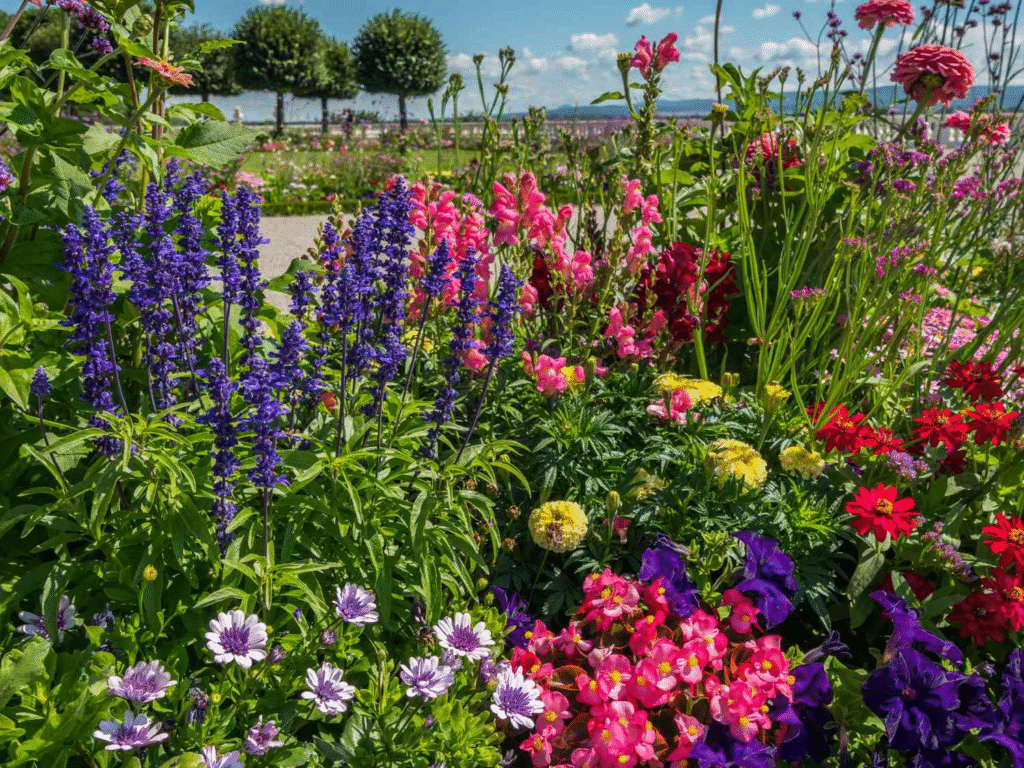
Marigolds: These bright flowers are renowned for their ability to repel nematodes and other soil-dwelling pests. Their strong scent can also deter Colorado potato beetles and other above-ground pests.
Sweet Alyssum: This low-growing flower attracts beneficial insects like hoverflies and parasitic wasps that prey on potato pests. It also serves as living mulch, helping to retain soil moisture and suppress weeds around potato plants.
Nasturtiums: These edible flowers can act as trap crops, luring aphids and other pests away from your valuable potato plants. Plant them at the perimeter of your potato patch for best results.
Petunias: Beyond their ornamental value, petunias attract beneficial insects while repelling some common potato pests with their subtle fragrance.
Other Vegetables
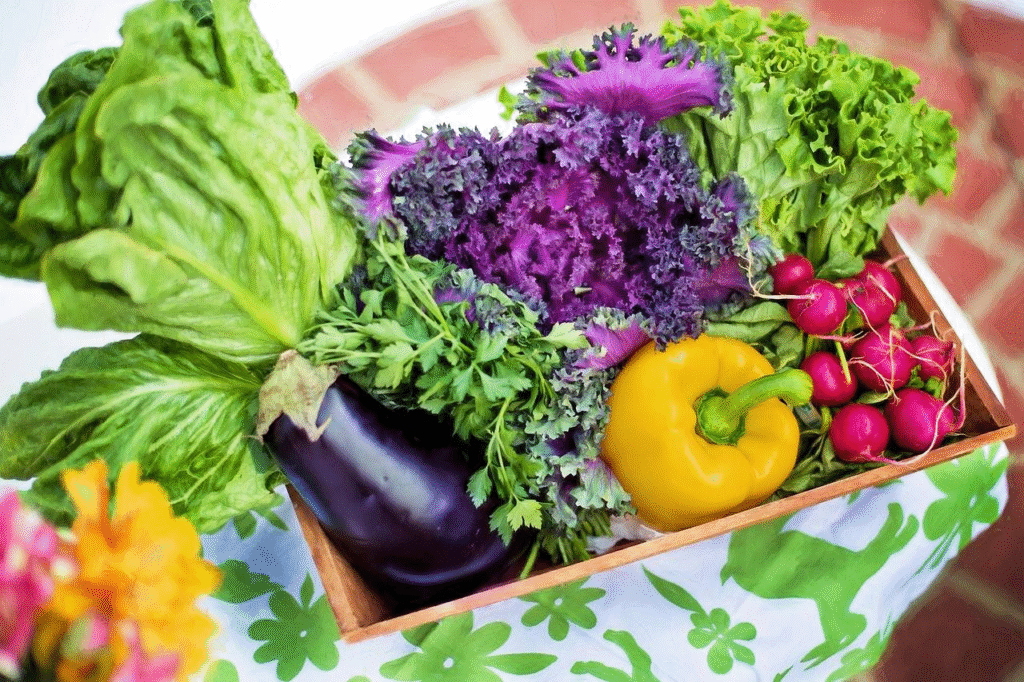
Corn: The tall stalks of corn plants grow upward with shallow roots, while potatoes develop underground with deeper root systems. This complementary growth pattern maximizes garden space and resources. Some gardeners also report that growing corn near potatoes may improve potato flavor.
Lettuce: These shallow-rooted, fast-growing greens can be planted between potato plants to maximize space utilization. Harvest the lettuce before the potato plants reach full size and begin competing for space.
Spinach: Like lettuce, spinach has shallow roots and can be harvested before potato plants reach maturity, making it an excellent choice for maximizing garden space.
Planting Onions and Potatoes Together: A Strategic Pairing
One of the most beneficial companion planting combinations for potatoes is growing them alongside onions. This pairing works particularly well because:
- Complementary Growth Patterns: Potatoes develop deeper in the soil (6-8 inches deep), while onions remain shallow (about 1 inch deep). This difference means they utilize different soil layers rather than competing for the same resources.
- Pest Management: Onions emit sulfur compounds that repel many common potato pests, including the notorious Colorado potato beetle. Some gardeners report that interplanting onions with potatoes significantly reduces pest damage.
- Disease Resistance: The antibacterial properties of alliums like onions may help reduce the incidence of certain potato diseases.
- Space Efficiency: By growing both crops together, you can maximize your garden space while providing mutual benefits to both plants.
- Practical Planting Strategy: A practical approach is to plant onions around the edges of potato rows or between potato plants. As you hill soil around the growing potato plants, you can simultaneously expose more of the onion bulbs, benefiting both crops with a single maintenance task.
For the most effective pairing, consider these planting tips:
- Space onion sets about 4-6 inches apart in rows between or alongside potato plants
- Allow at least 10-12 inches between onions and potatoes to prevent crowding
- Plant onions slightly earlier than potatoes if possible
- Consider using scallions or green onions for faster results
Plants to Avoid Near Potatoes
While many plants benefit potatoes, others can cause problems and should be kept separate:
Other Nightshade Family Members
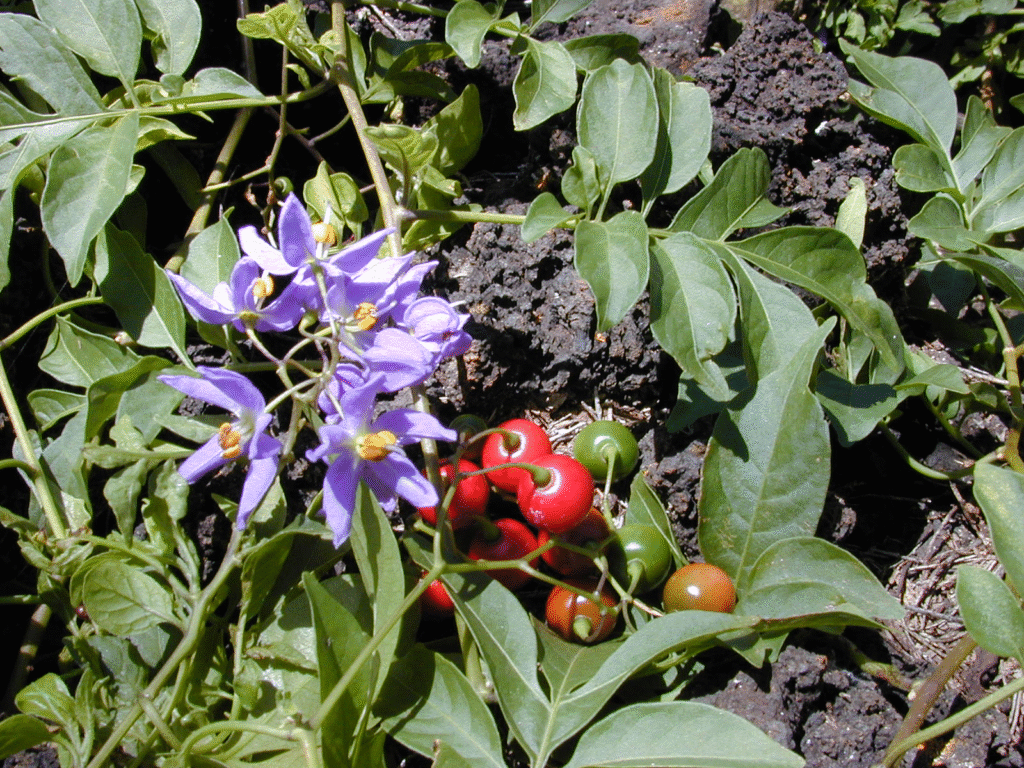
Tomatoes: Though closely related to potatoes, tomatoes should never be planted nearby. Both crops are susceptible to the same diseases, particularly late blight, which can spread rapidly between these plants. They also compete for similar nutrients.
Peppers: Like tomatoes, peppers share disease susceptibilities with potatoes and should be kept in separate parts of the garden.
Eggplant: Another nightshade family member that competes for nutrients and can share diseases with potatoes.
Root Competitors
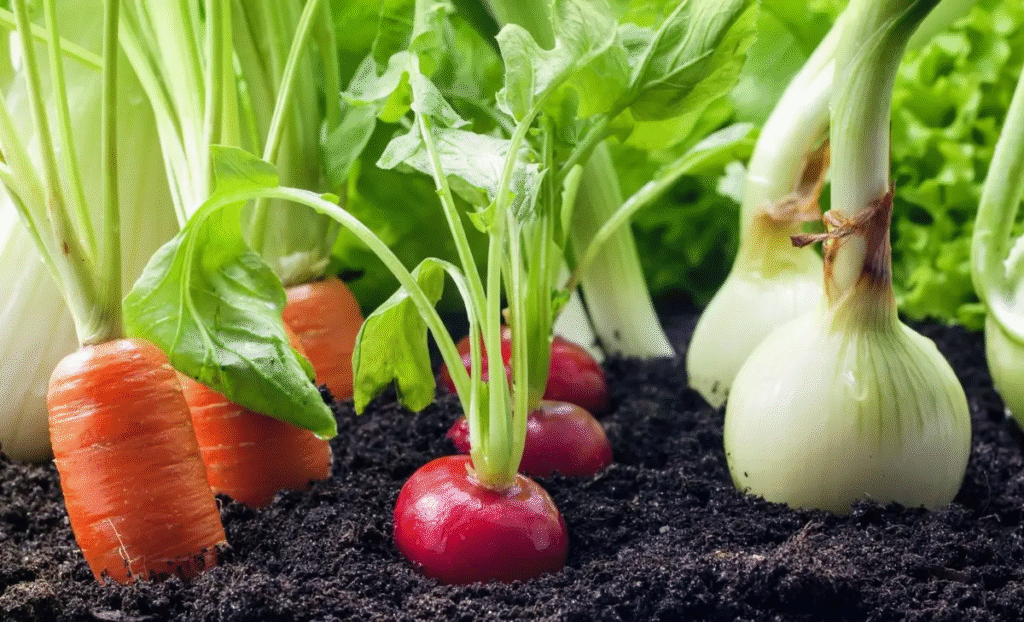
Carrots: These root vegetables compete directly with potatoes for underground space and nutrients.
Turnips: Similar to carrots, turnips compete with potatoes for underground growing space.
Parsnips: Their long root systems directly compete with developing potato tubers.
Other Incompatible Plants
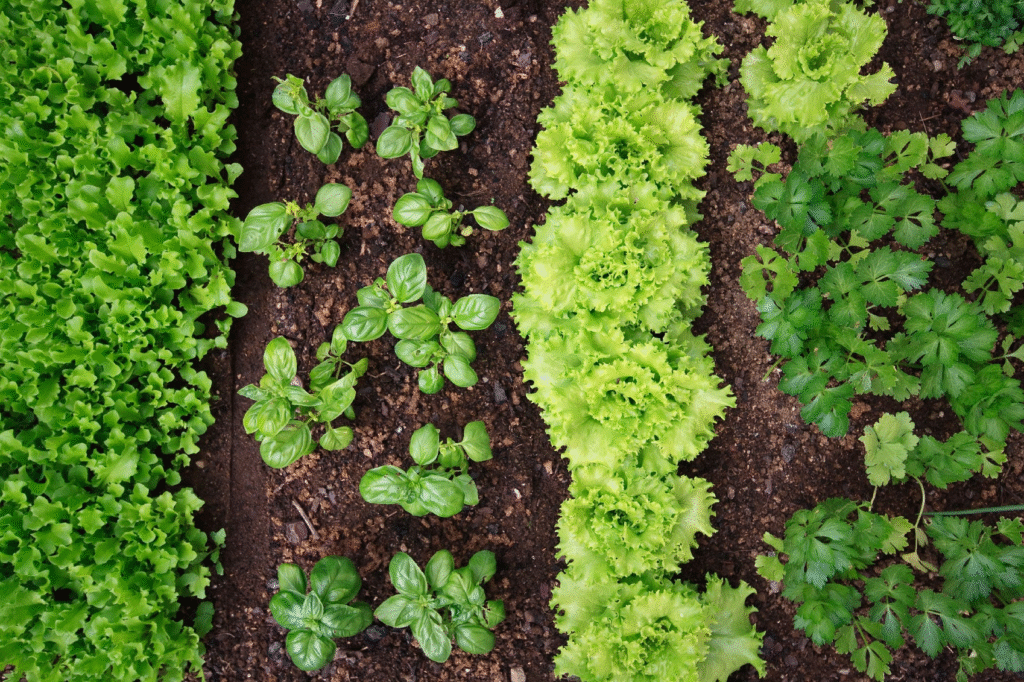
Cucumbers: These plants compete heavily for water and nutrients and may increase the risk of blight in potato crops.
Squash/Pumpkins: Their sprawling growth habit and high water requirements make them poor companions for potatoes.
Sunflowers: These can inhibit potato growth through allelopathic effects (releasing compounds that suppress other plants).
Raspberries: These berries and potatoes can easily spread diseases to each other when planted in close proximity.
Companion Planting Strategies for Potato Success
For best results with potato companion planting, consider these practical approaches:
Strategic Arrangements
- Border Planting: Surround potato patches with marigolds or alliums to create a protective barrier against pests.
- Interplanting: Place compatible companions like beans or herbs between potato rows for maximum space utilization.
- Succession Planting: Plant quick-growing crops like lettuce or spinach between potato rows to harvest before potatoes reach full size.
Timing Considerations
- Early Season Companions: Plant fast-growing companions that will be harvested before potatoes reach maturity.
- Mid-Season Support: Ensure nitrogen-fixing plants like beans are established when potatoes enter their heaviest feeding phase.
- Season Extension: Use companions that thrive in different temperature ranges to extend your overall harvest period.
Conclusion: Creating a Harmonious Potato Garden
Companion planting represents one of the most natural and effective approaches to improving potato yields while reducing pest and disease problems. By strategically combining potatoes with beneficial companion plants like onions, beans, herbs, and flowers, you can create a more resilient garden system that requires fewer inputs while producing better results.
Remember that while companion planting principles provide excellent guidelines, every garden is unique. Factors such as your specific climate, soil conditions, and regional pest pressures all influence which companion plants will work best in your potato patch. Don’t be afraid to experiment with different combinations and record your results to develop the perfect companion planting strategy for your garden.
By working with nature rather than against it, companion planting helps you grow healthier, more productive potatoes while contributing to the overall biodiversity and balance of your garden ecosystem.
